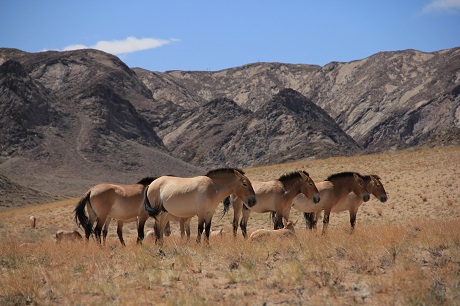Scientists of S. Toraighyrov Pavlodar State University together with colleagues from Western Europe, Russia and Kazakhstan presented their research in the field of the origin of domestic horses and Przewalski's horse in one of the most authoritative scientific journals “Science”.
As a result of the study of the DNA of ancient horses from Europe and Asia, scientists led by Professor L. Orlando from the GeoGenetics Center of the Natural History Museum of Denmark found that the Przewalski's horse, considered as the last representative of wild species and the ancestor of all the existing domestic horses, was not wild .
Przewalski's horse is a descendant of horses, domesticated 5.5 thousand years ago on the Botay settlement in North Kazakhstan. In Pavlodar Irtysh Land, the remains of a Botay-type horse were found at the Borly 4 settlement (Lebyazhye district), where since 2011 archaeologists from the joint scientific research archaeological center named after A.Kh. Margulan of Pavlodar State University V. K. Merts and I.V. Merts have conducted their research.
“An important discovery of the genetic research is that the horses used by the Eneolithic population of North and North-East Kazakhstan ta the Botay and Borly 4 settlements belong to domestic species. Previously, these conclusions were based on the morphological features of the bones of the Botay horse and other indirect proofs that did not have an absolute criterion of evidence, which left opponents with the possibility of criticism and mistrust. For that reason, this discovery, largely, closes the long-standing discussion about the existence of producing forms of farming in the form of cattle breeding, rather than primitive hunting in the Kazakhstan steppes in the Eneolithic Period in the 4th millennium B.C. As for Przewalski's horse, it emerged that it is a by-product of breeding, and not an independent wild species”, says V. Merts.
Further study of settlements of ancient cattlemen on the Borly lake and genetic peculiarities of the horses’ bones found on them, will be able to confirm and prove the presumption about an earlier appearance of the productive household in the East of Kazakhstan.
http://science.sciencemag.org/content/early/2018/02/21/science.aao3297







